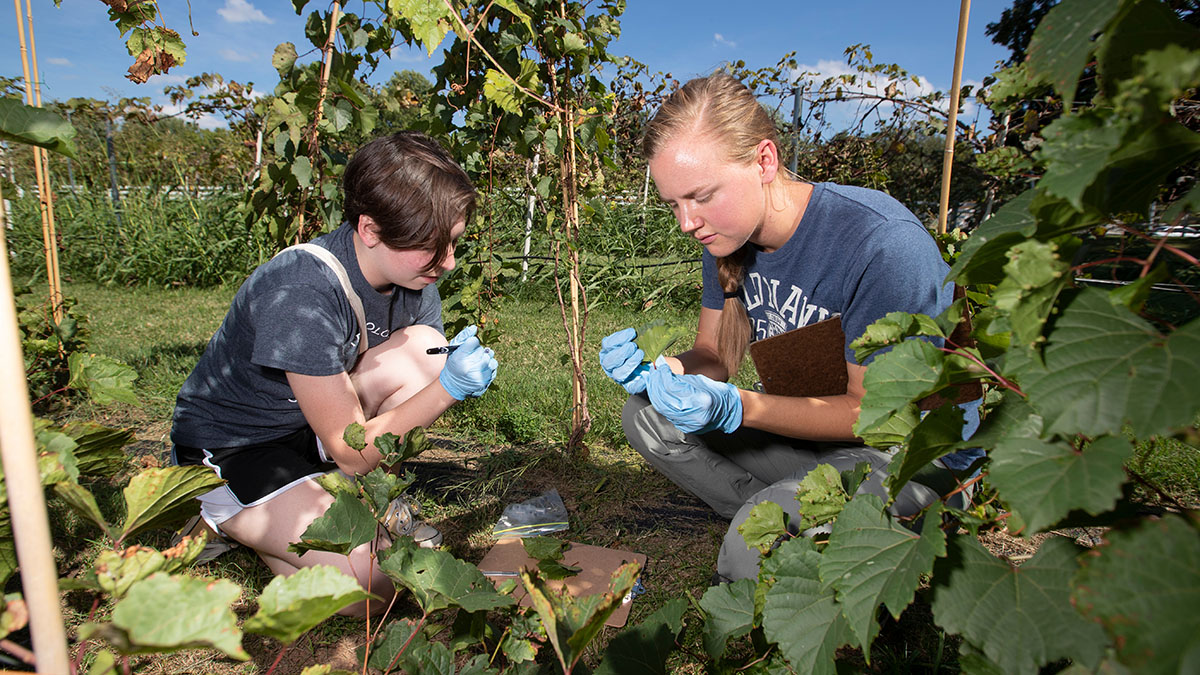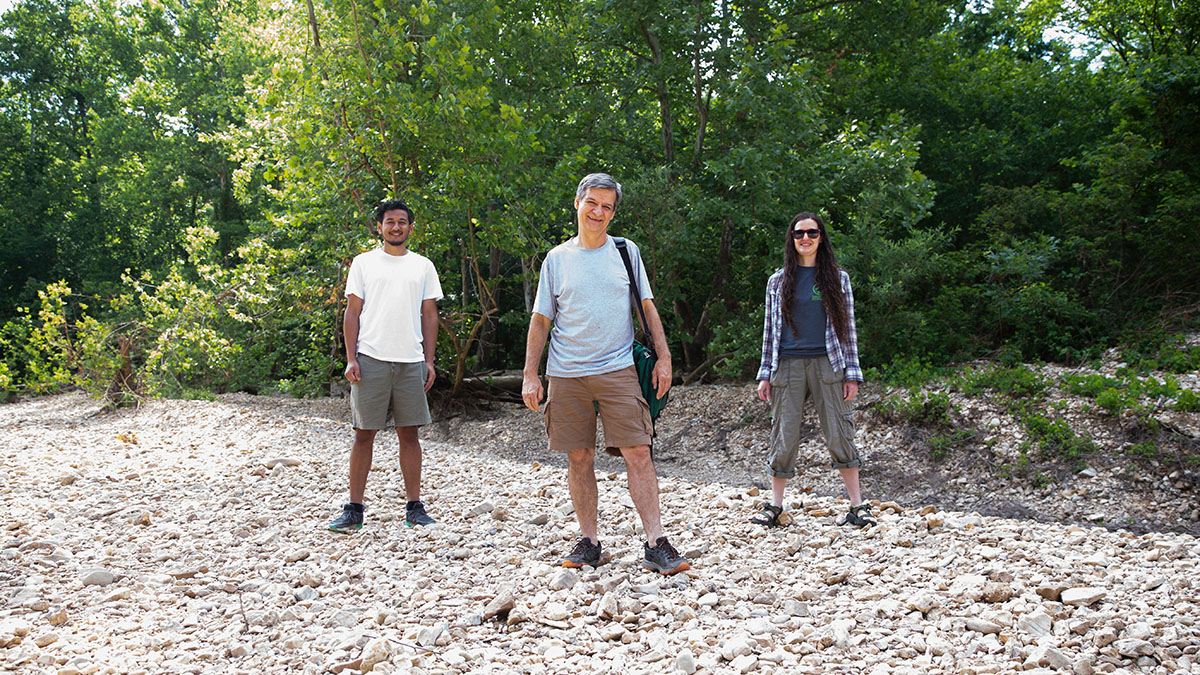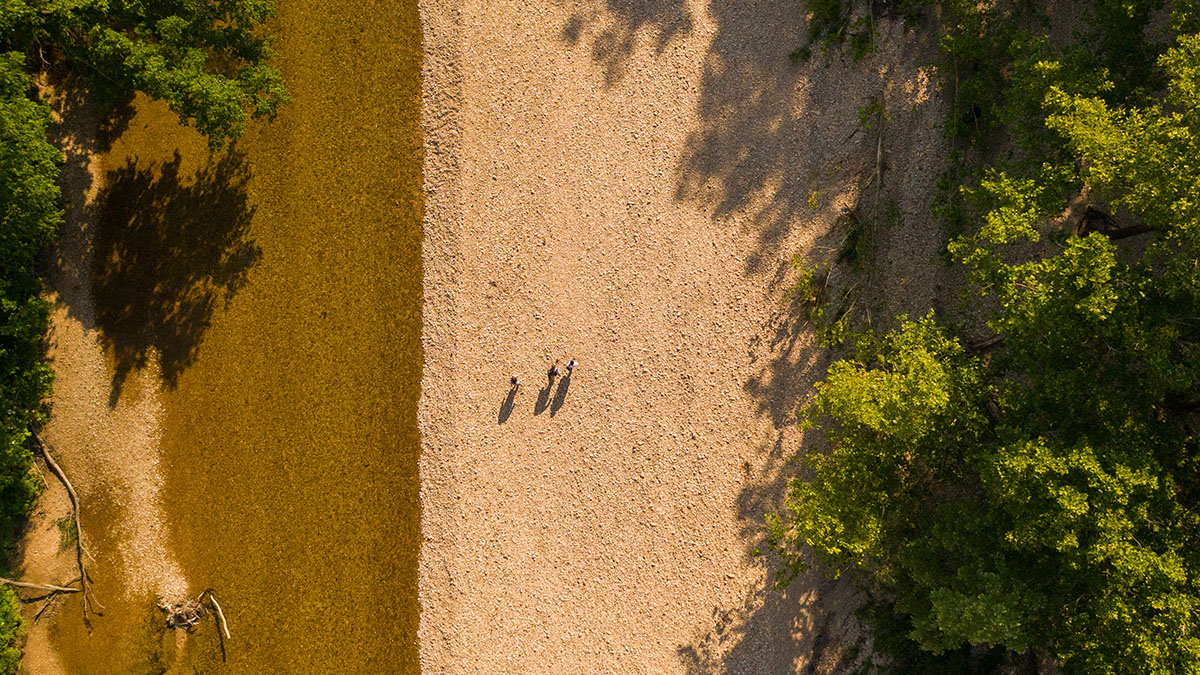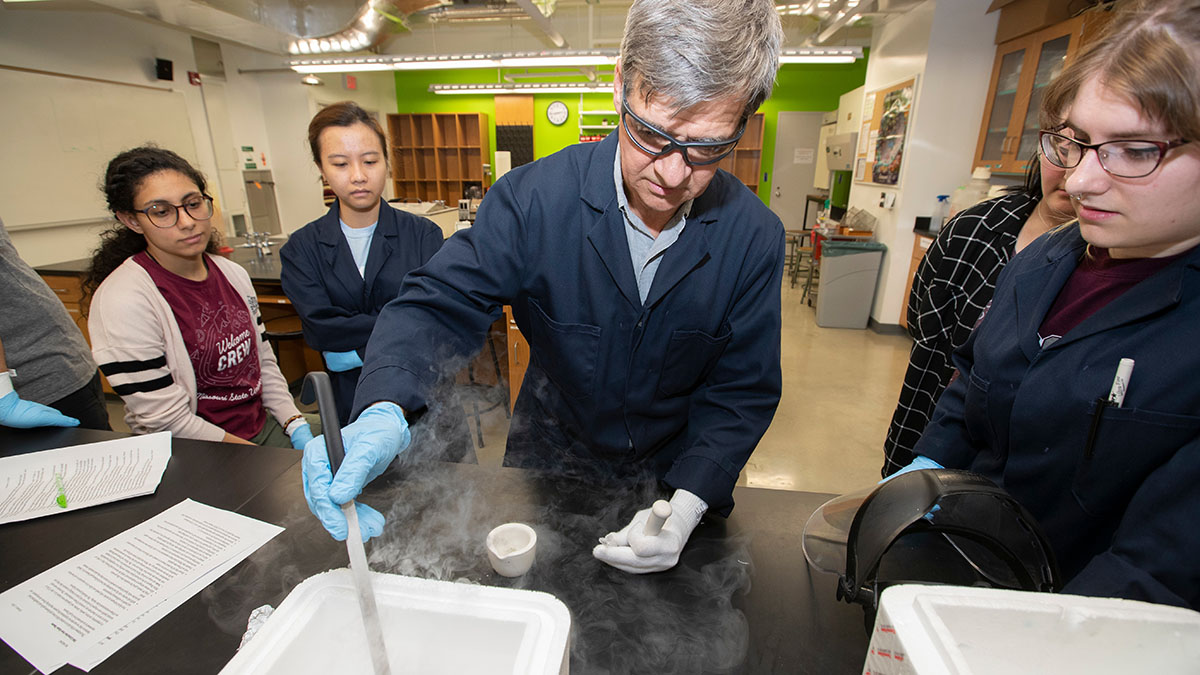Archive for September, 2020
Root of the problem
But as the availability of cultivable land diminishes and as climates change, our ability to grow enough food is becoming limited, too.
This is the root of Dr. Laszlo Kovacs’ research. He’s a geneticist interested in the agricultural industry.
“For most of history, we didn’t have to worry about food,” said Kovacs, biology professor at Missouri State University. “Now, with a huge and rapidly increasing population size, we are faced with many challenges. We have to start using land that is not ideal. And, as a result of the climate emergency, we have to deal with more extreme weather conditions.”
All of this leads to an impending food shortage.
“Not just any food will do,” he said. “We desire quality food, right?”
His focus is on studying grapevine rootstocks to identify genes that will make plants hardier for the necessary conditions. He looks at the genetic makeup to identify traits for disease and pest resistance, drought tolerance and flood tolerance among many other characteristics.

Students take samples of grape hybrids at the Darr Agricultural Center.
Two wild grapes
Kovacs’ current research projects build upon his previous findings, like the identification of genes that make grapes more resistant to a fungal disease. He’s contributed more than 20 peer-reviewed journal articles in the past 10 years and serves as a reviewer for 10 industry journals.
“Laszlo Kovacs is a leader in the field of plant genetics and grapevine natural history, and an outstanding collaborator and mentor,” said Dr. Allison Miller from St. Louis University. “The breadth and depth of his knowledge provides novel insights into grapevine biology and beyond.”
More than anything, this Hungarian-American loves being in the beauty of the Ozarks collecting wild relatives of the cultivated grape.
He and his students have been collecting plants of two interesting North American grapes: the riverbank grape and the rock grape. These grapes have been the cornerstone of his studies during the last 10 years.
“Once I see that glitter in my students’ eyes, they hit the ground running on helping with research.”
The riverbank grape roots where the soil is always moist. Instead of rooting down, the riverbank grape spreads its roots horizontally. But why? It’s in the genes.

Graduate student Sujan Thapa (left) and Dr. Courtney Coleman (right) accompany Dr. Laszlo Kovacs on a trip to Swan Creek.
On the contrary, the rock grape grows in drought-stricken areas. Its roots grow straight down to find water. Again, this trait is encoded in its genes.
These two species have adapted to their respective habitats as a result of evolution.
“Evolution is ‘product development’ over millions of years,” Kovacs said.
In the wild, a plant dies if its genes don’t match the environmental conditions under which it grows. A plant that has the “right genes” will be healthier and develop into a stronger, larger individual, he noted.
This results in more seeds. Then, a greater percentage of the next generation of plants will have the “right genes” for that area and climate.
Kovacs is attempting to identify genes that allow vines to adapt to the dry or moist conditions.
“We are interested in those genes and can transfer them to cultivate grapes or possibly other plants,” he said.

Dr. Laszlo Kovacs walks along Swan Creek with graduate student Sujan Thapa and Dr. Courtney Coleman.
Survival
The rock grape is found in the riverbeds of intermittent rivers and creeks. For instance, Swan Creek, one of his study locales, fills and flows for a couple of days, then dries up for weeks.
To find the water and nourishment to survive in this nutrient-poor area, the roots dive deep. His team realized that this would be a valuable trait for drought-prone areas.
“Every organism is trying to find its niche,” Kovacs said. “The rock grape found its niche by eking out a living under very poor conditions where other plants cannot.”
This is very advantageous in agriculture, he said.
“If we can identify the genes that enable these grapes to grow there, we have extremely valuable resources,” he said. “If you go to a desert area, maybe grapes with these rootstocks can grow. That provides huge economic opportunities.”
“Laszlo’s students, some of whom have joined graduate programs at St. Louis University, are among the most talented and promising students with whom I have had the joy to work.” – Dr. Allison Miller, St. Louis University
He’s not going to become a grape breeder, though. And he isn’t interested in transplanting these specific grapes in the desert. He’s experimenting with grafting other grape shoots onto these roots.
Grafting technology has been around for more than two millennia. A rose bush or the apple tree that you purchase is often the result of grafting two separate plants together.
For the past 150 years, grafting has also been used in grape culture.
“What we’re doing has an impact both locally and globally.”
Up to this point, the driving force behind grafting has often been to enhance the ability of growth of fruit trees and ornamental plants.
For Kovacs, it’s for our survival.

In his lab at Missouri State, Dr. Laszlo Kovacs demonstrates research techniques to his students Basant Hens (far left), Anh My Ly (left) and Emily Heaton (right) in his phenotyping course.
Team effort
To better understand the role the rootstock can play in crops, Kovacs is collaborating on a study with Miller and other scientists throughout the U.S. The multimillion dollar study, which is funded by the National Science Foundation, will be completed in 2021. However, the study has already produced results.
“For years, Laszlo has contributed to the collection of data and tissues, always generously sharing his knowledge, jokes and making light conversations during the long and very hot days in the vineyard.” – Dr. Allison Miller, St. Louis University
Using the riverbed grape and rock grape rootstocks, Kovacs and his team made a cross. Then, they grafted each of these new plants with the same scion, that is, a different plant which is forced to live with the rootstock and form the entire shoot system of the resulting composite plant. The genes of that scion are exactly the same in 300 plants — only the genes of each root are different.
“By doing this, we can very precisely study how the rootstock influences the characteristics in the shoot,” Kovacs said.
His team is also grafting other scions on the rock grape rootstock to map and identify genes. With this knowledge, the team can learn how to subtly modify features to make grapes more appropriate for different climates and conditions.
“Even though we’re interested in the root system, once we make an experimental hybrid, it’s easy for us to find genes that are responsible for disease resistance,” he said. “It’s a long process, but it’s important work. We are experimenting with plant biodiversity to make a more sustainable crop.”
For example, Kovacs noted that there’s a wild Norton grape variety in Missouri that is too high in potassium. If there’s a rootstock that is known to pull very little potassium from the soil, the
two could be grafted together to improve the grape production.

Student Basant Hens reports on data on the grapevines at Darr Agricultural Center for Dr. Laszlo Kovacs’ phenotyping class.
Back to the wild
Our ancestors, Kovacs said, selected plants with the largest seed and tastiest fruit to propagate the next generation of crops. However, they didn’t select based on ability to grow in poor soil.
“They didn’t have to, and they didn’t know how,” he said.
This selection method caused many ancient plant varieties and wild relatives of crops to become extinct or depleted over the years.
“Many people think this type of research is kind of romantic – this idea of going to the wild. Oh, but it’s very practical.”
Much of Kovacs’ work involves wild grape species because, biologically, saving native plants provides great benefits. Those species may have critical genes for something in the future, which is worth preserving. In fact, that’s how his team discovered the downy mildew resistance gene.
“We found it just because we looked at a new plant,” he said. “If we look at maybe 10 more plants, we might find five more new genes.”
This study helps grape growers, but ultimately, the knowledge can be widely applicable to all agricultural products.
“The future of humanity, to a great extent, is based on how we can provide enough food,” Kovacs said. “We have to dip into the vast genetic diversity of wild plants to see what they can provide.”
- Story by Nicki Donnelson
- Photos by Jesse Scheve
- Video by Chris Nagle
Further reading

